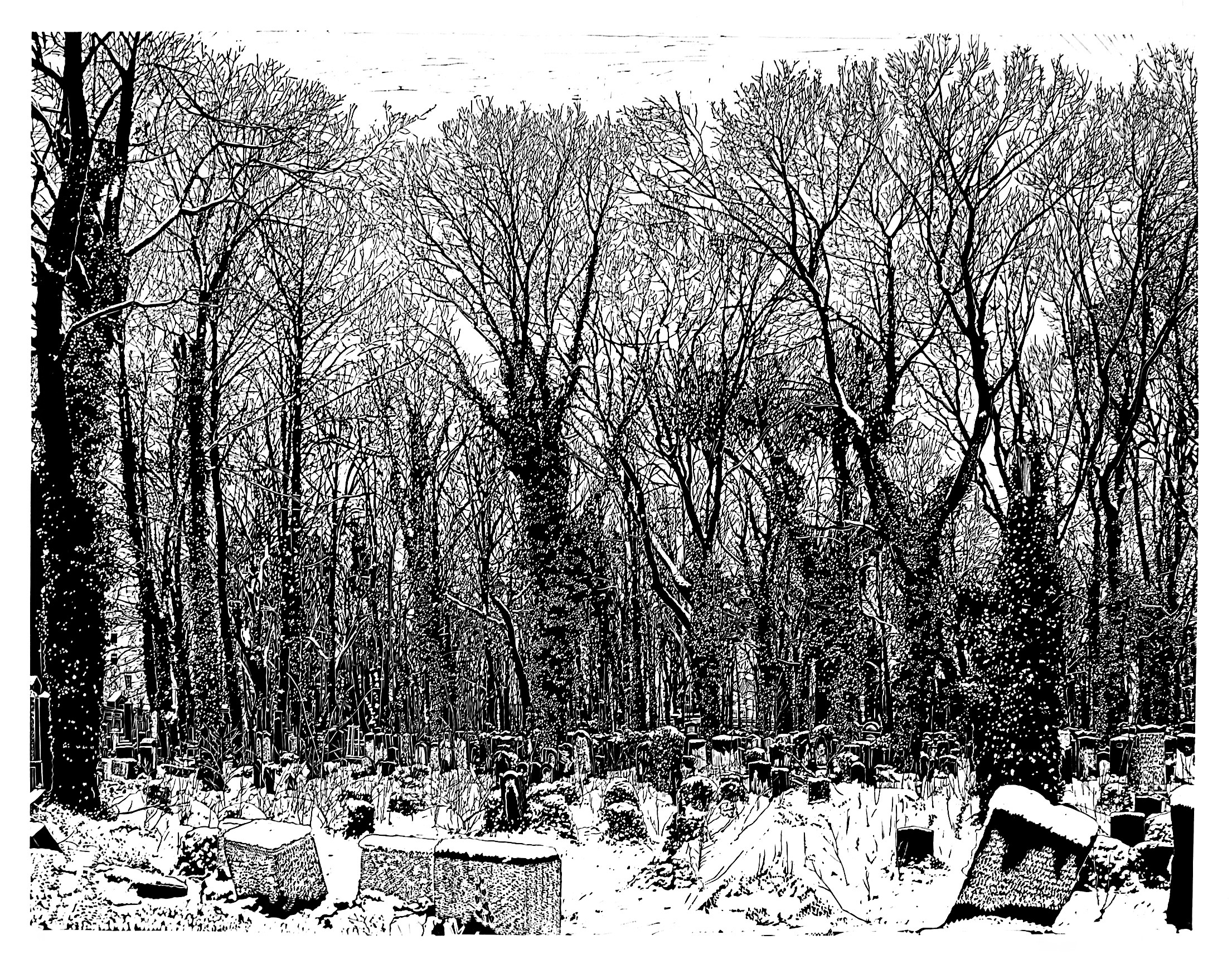Hennevogl, Philipp

Born 1968 in Würzburg, lives and works in Berlin
A nearly infinite network of intersecting lines, crossbars, and interstices spans the black-and-white graphic image. In the foreground—almost insulting in its reduced simplicity of form—is a solitary streetlamp. The title of this 2008 work by Philipp Hennevogl is Gerüst (Scaffold), and like many of his works it is a linocut. It is nearly impossible to believe that somebody would take the effort to reproduce such complexity—whose aesthetic impact is undisputed—with the painstaking technique of linocut, instead of capturing it in a photographic blink of an eye. But in so doing, Hennevogl does his subject justice in an entirely practical manner reflecting the time and energy required to erect this scaffolding with its multitude of crossbars. And he does so abstractly—the multilayered, mutually penetrating structures can, after all, be seen as a representation of time as it plays out in space.
In his earlier linocuts and woodcuts, Hennevogl depicts primarily people. We also encounter still-lifes and interiors, some of them with color. Gradually, he moved towards abstract structures. These are always more than mere experiments in form, and they find their counterparts in reality: a curtain, a grate, piles of material, or… a scaffold. Like the photographs of the New Objectivity and the New Vision of the 1920s, Hennevogl finds the abstract potential hidden in our surroundings and is capable of achieving attractive images through the use of cropping, perspective and photographic technique. His most recent works show an increasing interest in playing dynamically with forms and lines found in plants, fabric, and lettering. They create contrasts to rigid structures or dominate the image as a whole. In these works, the flexibility of the material, placed in contrast to the deliberate approach and the linocut’s clear and differentiated appearance, establishes a visible tension.
Hennevogl’s extensive assessment of his working process is reflected in the treatment and depiction of his objects. The viewer sees the structure of surfaces and the changing play of light along with changes in perspective as if looking through a trick glass. One interesting addition to his body of work are his material prints from the series Mutterboden (Topsoil, 2007 and 2011). Printed directly from PVC flooring, they reproduce not only the material’s specific surface texture, but also show the traces of wear and tear. Titles such as Vier Fenster (Four Windows) and Weltraum Schwarz (Universe Black) make reference to the universality of structures.
